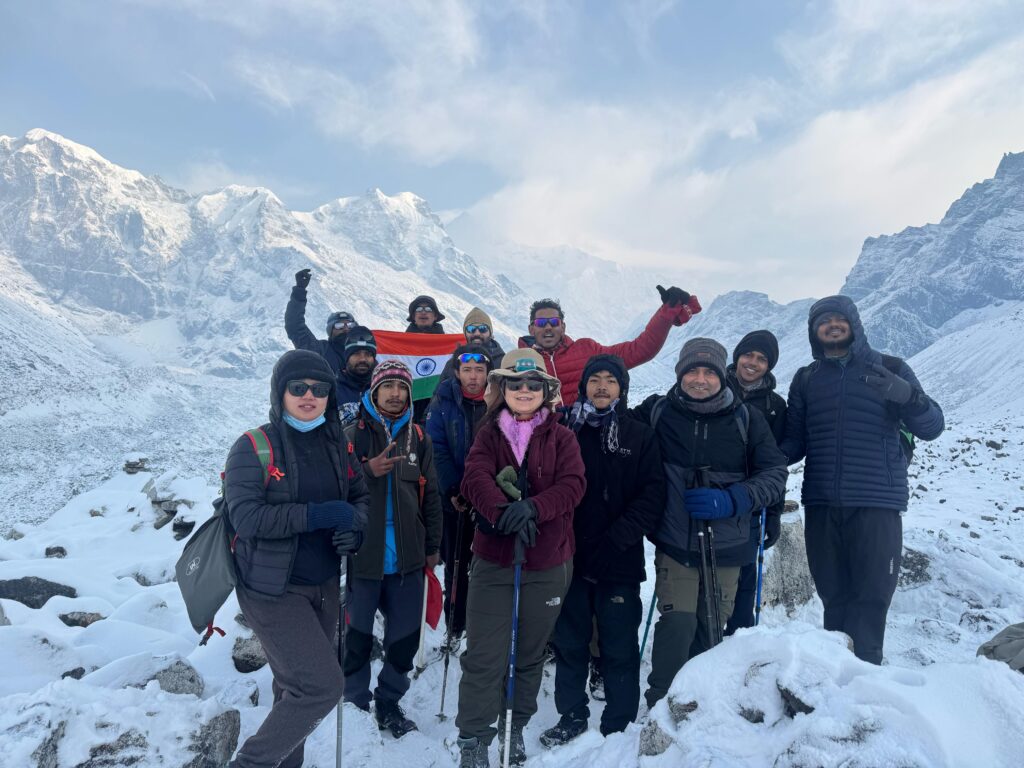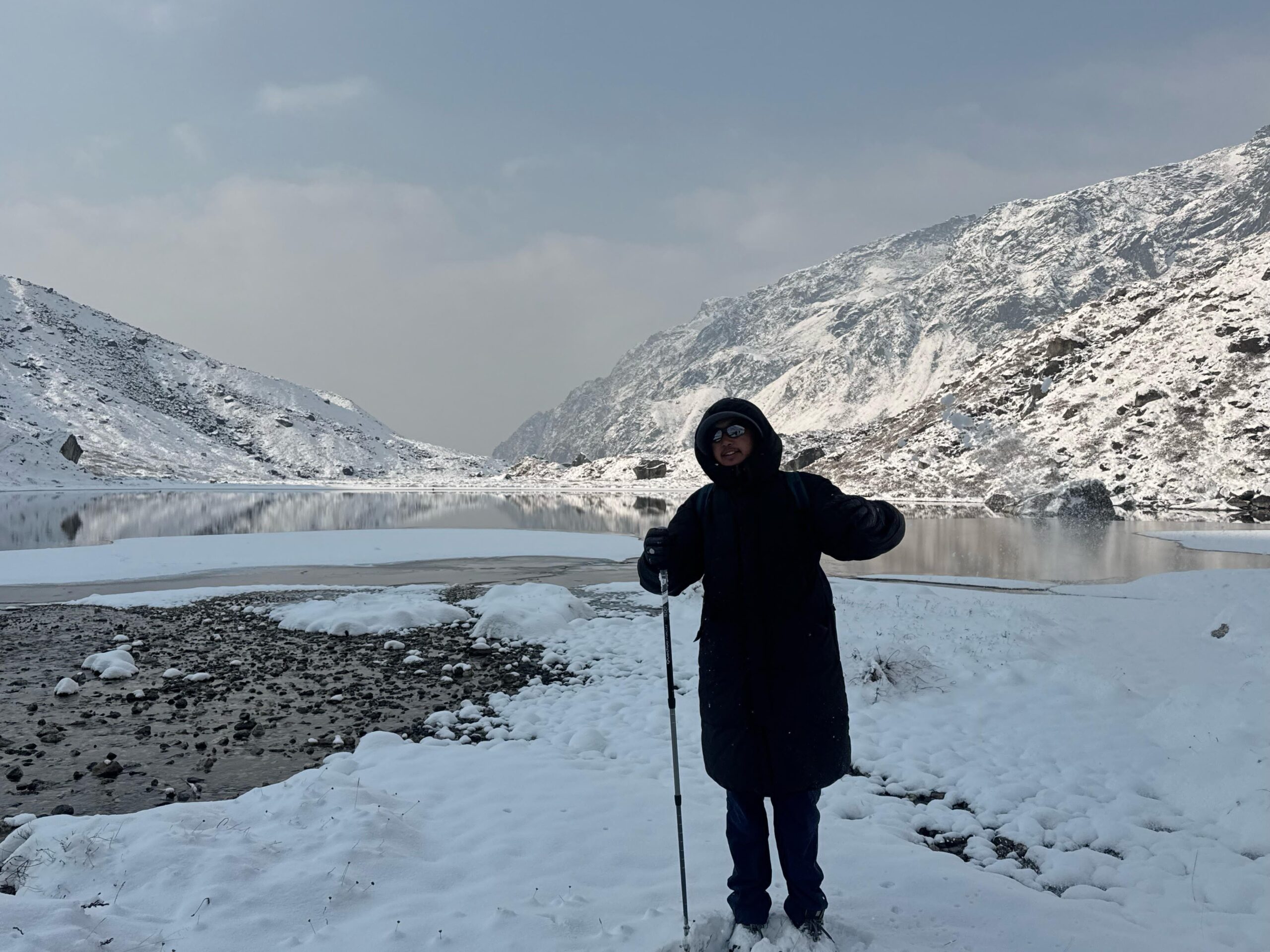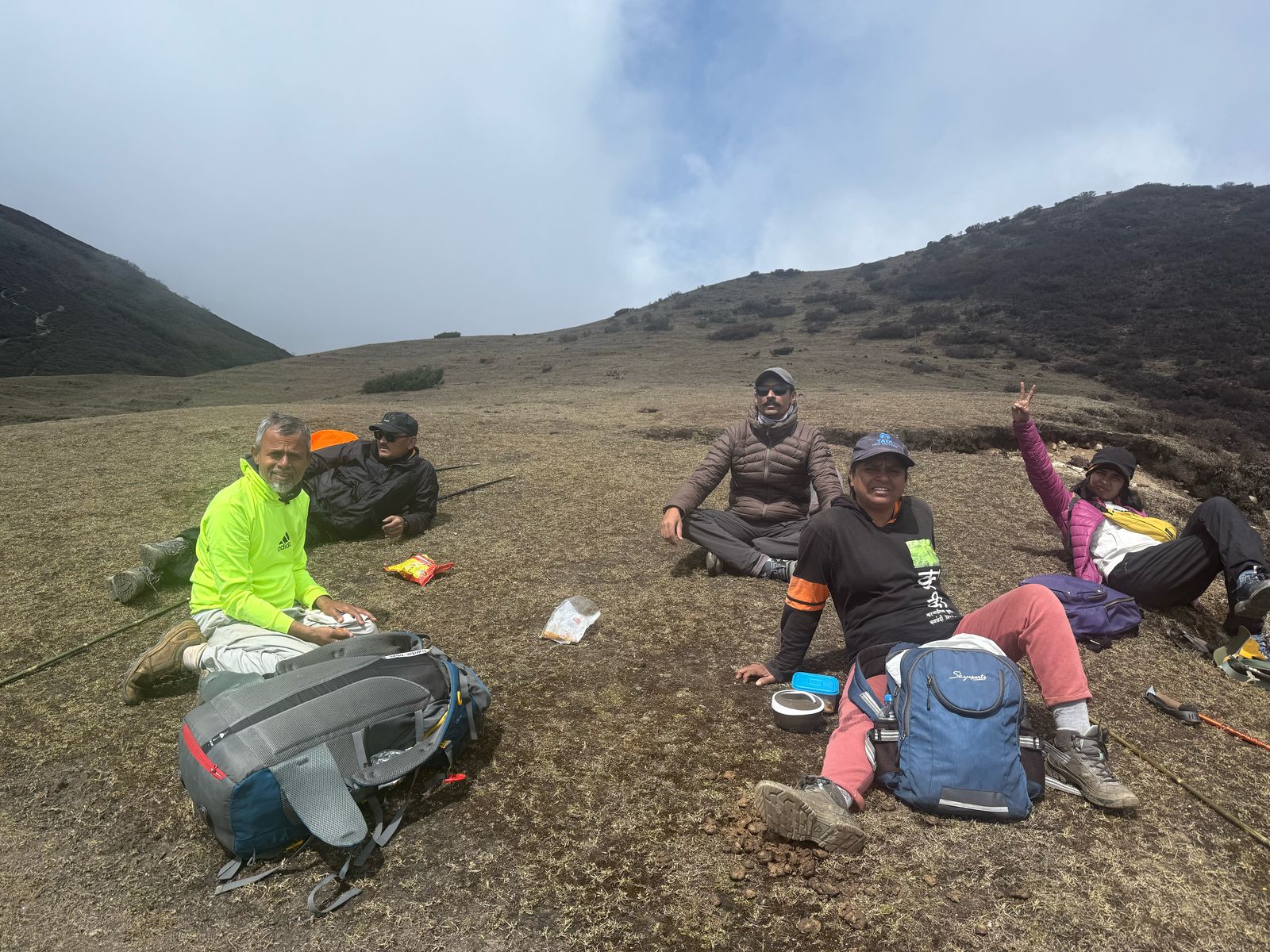
Goechala View Point 4750 meter
-
Goechala Trek Introduction
Goechala Trek is one of the most treasured and demanding trekking routes in the Indian Himalayas, located in the state of Sikkim. It also shows you some of the most impressive scenery, sumptuously displaying some of the most imposing mountains, forests, and glacier rivers. This trek ends at the Goechala Pass that shows the grandeur of the third-highest peak in the world, Kanchenjunga.

The Importance to the Trekking Community
Goechala Trek is regarded as a must-do trip for trekkers because of its rugged landscape, scenic beauty, and overwhelming feeling upon arrival. It is commonly referred to as a hidden gem in the trekking circles, attracting trekkers from around the globe.
Pointing Out Its Importance in the State of Sikkim, India
The Goechala Trek occurs in the mystical and beautiful state of Sikkim. The area is endowed with considerable biodiversity in its flora and fauna. The trek passes through isolated villages, monasteries, and beautiful valleys, providing you with an insight into the natural and cultural life of Sikkim. Goechala is also one of the holy places for the locals and is of spiritual importance due to its physical location near sacred mountains and places of spiritual ancestors.
- What Is Good About Goechala Trek?
Unique Experiences
The thing that makes Goechala a standout trek is the combination of scenery and challenging terrains. During your journey through beautiful lush forests and alpine meadows to the rough mountain trails, you will find moments of seclusion, admiration, and bonding with nature. The trek will give you an experience of traditional Sikkimese life as you interact with locals and learn about their practices.
Beautiful Views and Sceneries
The Goechala Trek is a visual treat to watch. The landscape has been continuously varying from the dense rhododendron forests, which encapsulate the lower ends, to high-altitude meadows adorned with stunning flowers. The serendipity here, however, is an incomparable sight of Kanchenjunga and some of its neighboring mountains as you near the Goechala Pass. The snow peaks, the glaciers, and the vast valleys enhance the visual beauty of this trek, making it unforgettable.
Possible Best Trekking Conditions
The weather of Sikkim is generally agreeable for trekking because the prevailing atmosphere is cool, and the skies are clear during the trekking seasons. Natural beauty and good weather make the Goechala Trek a great option for those seeking both an adventure and a worthwhile experience.
- Best Time to Trek Goechala
Time of Year and Weather Conditions

The optimum time to accomplish the Goechala Trek is in the spring (March to May) and autumn (September to November) seasons. The weather is relatively settled during these months, with clear skies, moderate temperatures, and minimal rain. Rhododendrons flower in the spring, creating a marvelous color palette. Autumn is the best time to view and have the most vivid views of the surrounding peaks, including the great Kanchenjunga.
Best Months to Trek
The mild weather during the months of March-May, followed by the months of September-November, are the best months to trek in Goechala. June-August should be avoided as it is well into the monsoon rains, and the trails are dangerous and slippery. Late winter, from December to February, is trekking time but quite difficult due to the extreme cold and severe snow at higher elevations.
Seasonal Highlights
Every season has its own highlights:
- Spring (March-May): Moderate weather conditions, clear skies, and rhododendron blooms.
- Autumn (September-November): The most perfect weather with clear skies and wonderful mountain views.
- Winter (December-February): Snow-capped peaks. It is harsher.
- Goechala Trek Difficulty Level
Level and Skills Required
The Goechala Trek is a moderate to difficult trek, mainly because the hills are very high, steep, and have difficult weather. The trek requires reasonable fitness, stamina, and psychological strength. Although the ascent does not require technical mountaineering skills, trekkers should be able to walk on difficult terrain for long durations.
Practical Training for the Trek
Physical training is a must to be completely fit for the Goechala Trek. A few months of continuous cardio training and endurance building will help establish stamina and muscular power. Walking on uneven surfaces and adding uphill workouts to your routine will simulate what the trek will be like. Endurance activities like running or cycling will prepare you for the long-lasting nature of the trek. Furthermore, it is important to acclimatize with respect to altitude to prevent altitude sickness.
Safety Tests and Considerations
Safety plays the most important role on the Goechala Trek. Acclimatization is essential to avoid altitude sickness, and rest stops should be taken to help accustom to the increasing altitude. It is advised to hike or join an organized team with a professional guide. Good equipment, including sturdy boots, waterproof attire, and a first-aid kit, is necessary.
- Routes of Goechala Trek and Itinerary
Base Camps and Flagging-off Points
The Goechala Trek usually starts at Yuksom, a small locality located in West Sikkim. Yuksom can be reached by road (a good 5-hour drive) from the state capital, Gangtok, and marks the beginning of the trek. Starting at Yuksom, trekkers hike from one camping site to another, starting with Tshoka, Phedang, Dzongri, and finally the Goechala Pass.
Exact Day-to-Day Programme
- Day 1: Yuksom to Tshoka: The trek takes off with a drive through a scenic route between Gangtok and Yuksom, where it continues with a trek to Tshoka. The path goes along dense forests and small villages.
- Day 2: Tshoka to Phedang: The day is marked with a steady climb through rhododendron woods, with teasing views of surrounding mountains.
- Day 3: Phedang to Dzongri: This is where trekkers reach Dzongri, a camp ground at high-altitude that has panoramic views of its surroundings.
- Day 4: Dzongri to Goechala Pass and Back: The most important attraction along the trek is the Goechala Pass, where trekkers get magnificent views of Kanchenjunga and other mountains. After sightseeing, trekkers hike back to Dzongri.
- Day 5: Dzongri to Tshoka: This marks the start of the return journey, heading downhill to Tshoka.
- Day 6: Tshoka to Yuksom: This will be the last trek day as trekkers reach Yuksom to complete the loop.
Some of the Major Milestones and Scenic Spots on the Way
- Tshoka: An amazing village located in rhododendron forests.
- Phedang: A calm place with a splendid view of the valley below.
- Dzongri: The final major campsite before the climb to Goechala and offers panoramic views of the mountains.
- Goechala Pass: The highest trekking altitude offering an outstanding view of Kanchenjunga, Pandim, and several other mountains.
- Must-Have Packing List and Packing Guide to Goechala Trek
Trekking Shoes, Clothes, and Gears
- Clothing: Warm or layered clothing that includes thermal clothing, fleece, and waterproof outer apparel. Wearing layers of clothing is necessary to adapt to changing climate conditions.
- Shoes: Two pairs of good, excellent-grip trekking shoes; one pair should be waterproof.
- Trekking Poles: Handy to maintain balance on steep uphills and downhills.
- Backpack: A day hiking bag to carry daily necessities and a bigger hiking bag for overnight items.
Staples such as Food, Water, and Medical Supplies
- Water: A hydration system or water bottles. Take along water purification pills or a filter.
- Food: Energy bars, snacks, and nuts to eat on the trail. Some meals are offered in campsites, but you should carry extra food.
- Medical Supplies: A simple first-aid kit—band-aids, antiseptic, painkillers, altitude sickness pills, and personal supplies.
Equipment to Snap the Beauty
- Camera: A DSLR or mirrorless camera for landscape photography.
- Additional Equipment: Extra memory cards, batteries, and a portable charger.
- How to Get to Goechala Trek Starting Point
Closest Cities and Transport Details
The closest city to Yuksom, where the Goechala Trek starts, is Gangtok, which is about 130 kilometers away. Gangtok is well-linked by road to major cities like Srinagar, Kolkata, Delhi, and Bagdogra. You can reach Yuksom by shared jeep or taxi from Gangtok.
Travel Guidelines for Newcomers
It is better to spend a day or two in Gangtok before starting the trek to allow sufficient acclimatization. Bring enough cash with you as ATMs might not be easily accessible in places like Yuksom. Expect the road leading to the trek’s starting point to be bumpy and winding.
- Local Culture and Highlights in and Around Goechala
Sikkimese Culture
Sikkim has a rich culture with an eclectic blend of Tibetan, Nepali, and Bhutia influences. You will be able to visit monasteries, including the Dubdi Monastery, one of the oldest monasteries in the area, and Sikkimese villages where you can learn about local traditions, rites, and everyday life.
Villages, Monasteries, and Wildlife Around the Area
Apart from natural beauty, the trek also brings an opportunity to visit local villages like Yuksom and Tshoka. The trek also passes through the Khangchendzonga National Park, where you can spot varied wildlife, including the Himalayan tahr, red panda, and many species of birds.
- The Difficulties of Goechala Trek
Conditions of the Weather and Altitude Problems
Altitude sickness is one of the common challenges faced on the Goechala Trek, and trekkers must acclimatize to the change in altitude. Sudden changes in weather might also occur, so it is important to be ready when it rains, snows, or becomes unusually cold.
How to Go About Difficult Terrain
The landscape is unique as the terrain varies, from forest paths to rocky paths. The steep inclines and declines can be physically taxing, so it is important to maintain a steady pace and take rests.
Trekking Safety Guides
When trekking, always hire a guide or go with a group. Carry a first-aid kit at all times and stay hydrated. If you experience symptoms of altitude sickness, descend immediately and seek medical help.
- Conclusion: Why the Goechala Trek Is on Your Bucket List
The Goechala Trek will provide an experience like no other for adventure seekers. It is a tough but memorable trip that is worth the effort: challenging terrain, breathtaking nature, and cultural depth. If you are looking to be physically challenged, find your spiritual side, or simply connect with Mother Nature, the Goechala Trek belongs on your bucket list.




